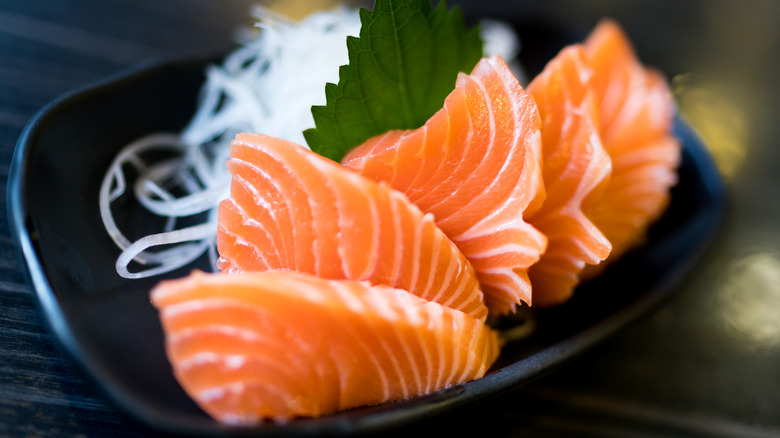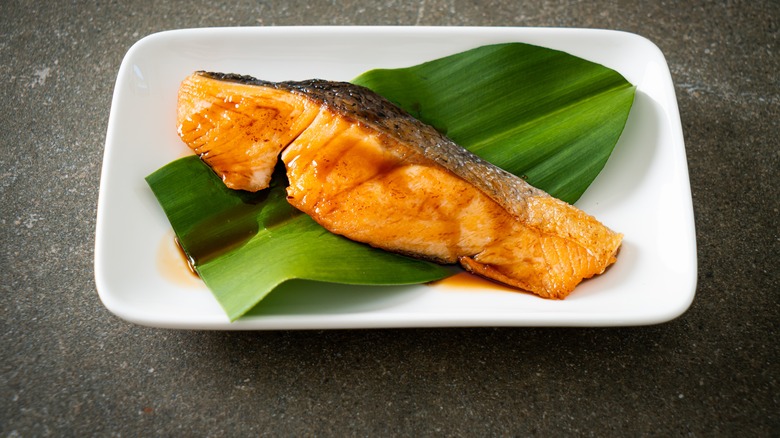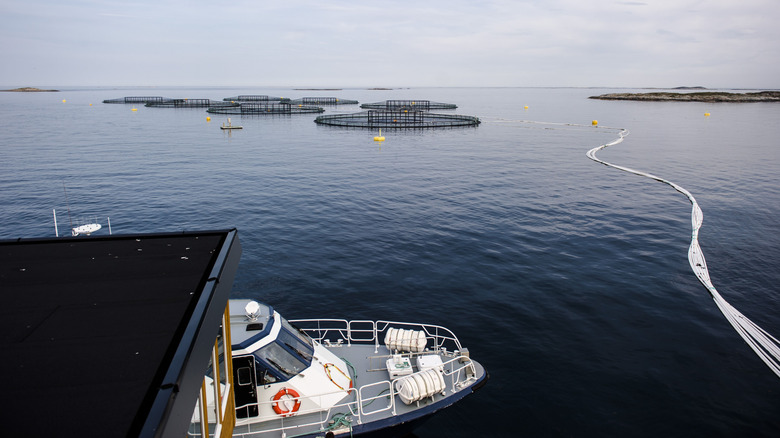A Norwegian Marketing Campaign Made Salmon Sushi Popular In Japan
While Japanese cuisine encompasses a wide variety of dishes, from curries to okonomiyaki to teppanyaki, and of course, most people immediately think of ramen and sushi. The depth of range continues within the sushi universe, and there are at least twenty types of sushi. According to PBS, sushi has been eaten in Japan since at least the 9th century, and today, raw salmon is one of the most popular and commonly found varieties.
The popularity of salmon (known as sake in Japan) in sushi form continues to skyrocket; in 2019, salmon exports to Japan were 40% more than a decade ago, demonstrating the increased appetite for the pinkish-orange fish (per Nippon). One data report from 2020 showed that for more than half of women and nearly half of men in Japan, salmon is the most popular sushi topping (via Nippon). However, it may surprise you that this taste for salmon sushi is the result of a relatively recent Norwegian marketing campaign.
Overcoming the aversion to raw salmon sushi
Prior to the 1980s, in Japan salmon was more commonly enjoyed grilled or cooked. The reason behind this is that the salmon caught in the local waters of the Pacific usually contained parasites, and thus salmon was viewed as inedible if raw, as reported by Japan Up Close. Older generations of Japanese, including one veteran and Michelin-starred chef Shimao Ishikawa, have never even eaten raw salmon — and refuse to even try it (per NPR). In addition to the unappetizing association with parasites, many Japanese people found the taste, color, and smell of the fish off-putting. Even the shape of the salmon's head was thought to be bizarre.
Enter Bjorn Eirik Olsen, the man behind Norway's Project Japan (which launched in 1985 (per Implement Consulting Group), an initiative to sell Norwegian salmon to the Japanese market, who forever changed the perception of salmon sushi.
A surplus of salmon and the marketing campaign to sell it
During the 1970s, Norwegian commercial salmon farming was thriving. However, Norwegians were eating less and less seafood, and, a decade later, the Norwegian salmon industry had a hefty frozen surplus of salmon on its hands. Japan, who had overfished their own waters, seemed like the perfect customer — until Olsen encountered the prejudice against salmon (per Japan Up and Close).
It was only when Olsen cleverly decided to rebrand Norwegian salmon, which was fished from Atlantic waters, that salmon went by a different name. Instead of calling it sake, the word sāmon was used (per Japan Up and Close) — and is still used widely today. But salmon didn't enter the Japanese market until 5,000 metric tons were bought at an enormous discount by one company, Nichirei, and televised celebrity chef endorsements (via The Odd Athenaeum).
Today, Norway remains the world's leading salmon producer though the government is considering a 40% tax on profits made in an effort to recompense the exploitation of "common natural resources," as reported by Le Monde.


